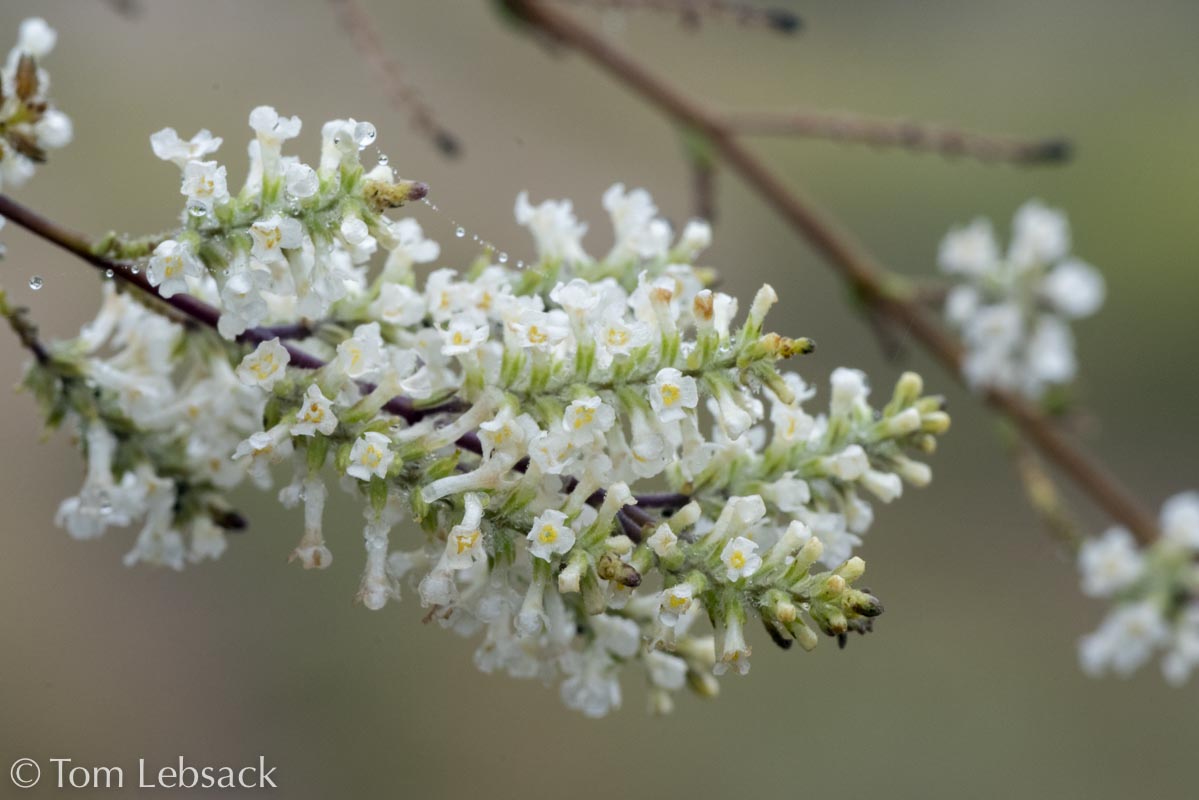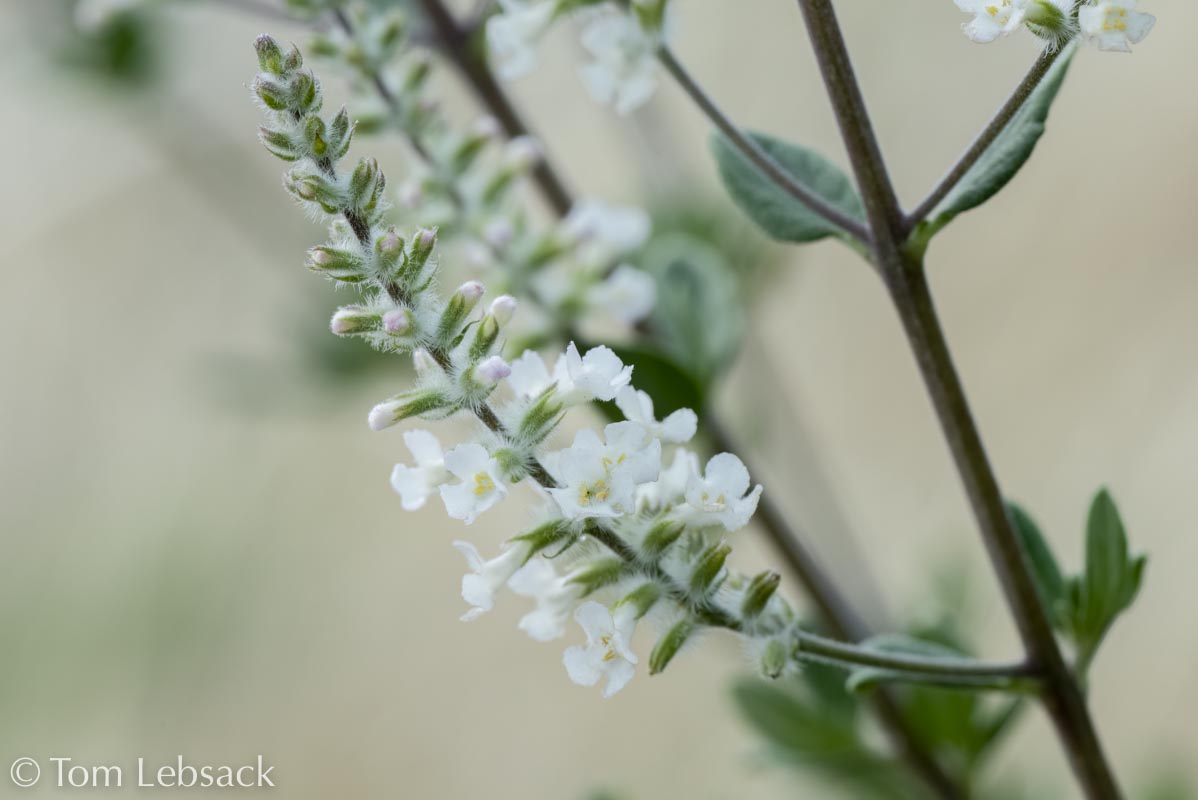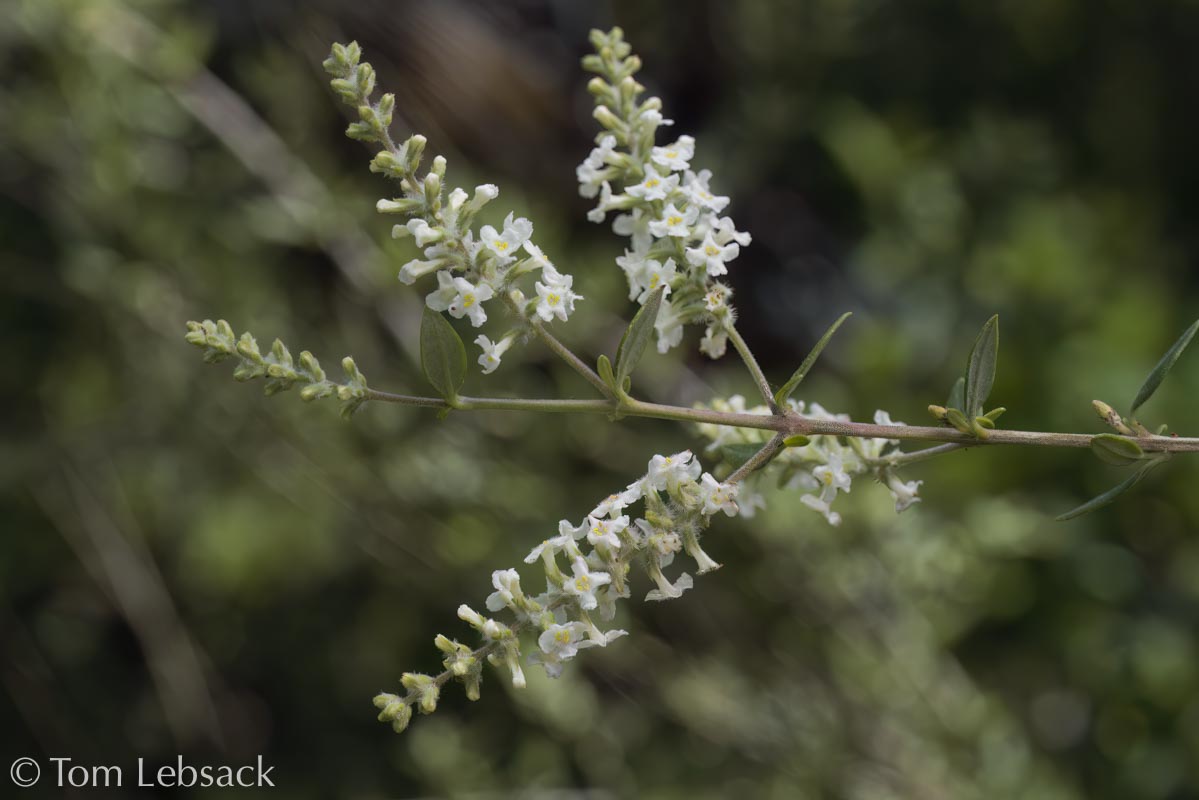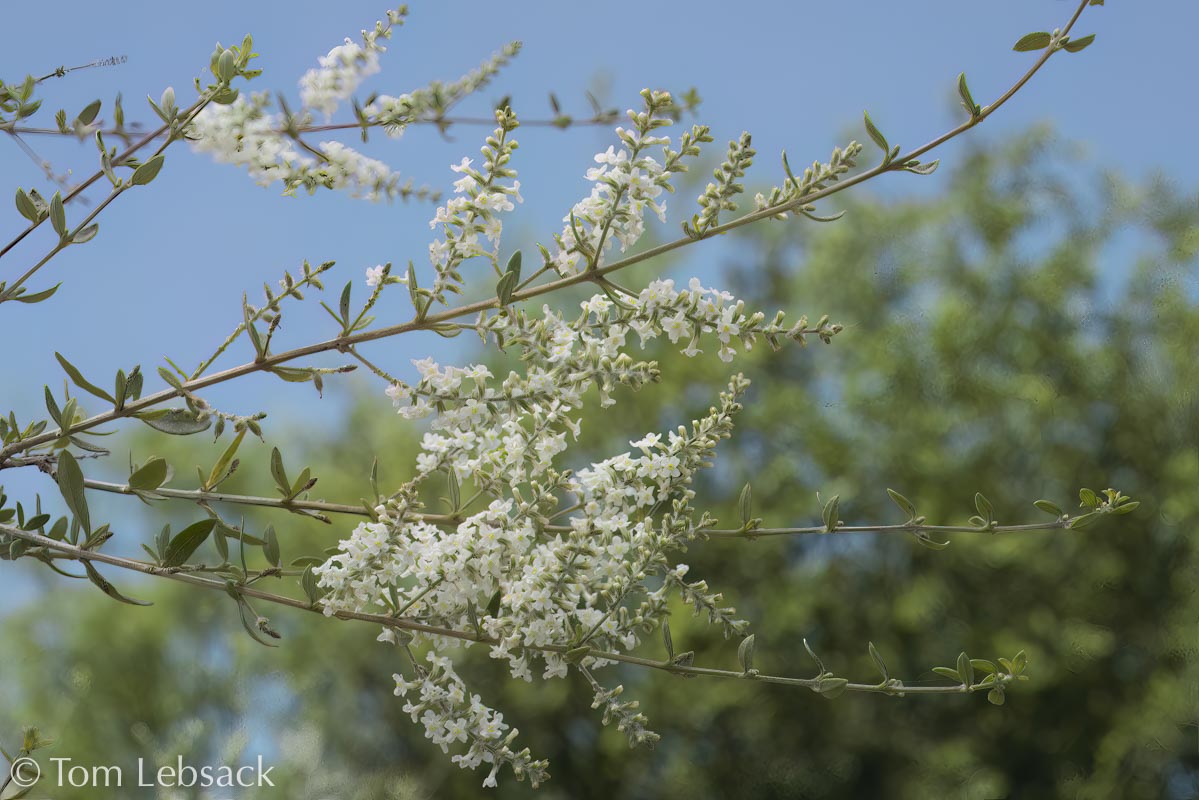Texas Wildbuds
Aloysia gratissima var. gratissima
(Beebrush)
| Scientific Name | Aloysia gratissima var. gratissima | USDA PLANTS Symbol | ALGRG |
| Common Name | Beebrush, Whitebrush | ITIS Taxonomic Serial No. | 182258 |
| Family | Verbenaceae (Verbena) | SEINet Reference |
Click Here |
| Description | Habitat: Dry sandy, limestone or granitic soils, rocky slopes, outcrops, limestone bluffs, and dry washes. Plant: Densely-branched shrub 3 to 9 feet tall, older branches gray, younger reddish with fine grayish-white pubescent hairs. Leaves: Relatively narrow (compared to g. var. schulziae)oblong, elliptic or lanceolate-oblong 1/4 to 1 inch long and up to 1/4-inch wide on short petioles; leaf axils often with fascicles (bundles) of younger leaves; margins usually entire; upper surfaces without impressed veins, lower are gray with appressed hairs; tips pointed or rounded. Inflorescence: Many small white blossoms, each 1/8 to 3/16-inch wide in leafy panicles of many slender, elongated spike-like racemes, 3/4 to 2-1/2 inches long growing from leaf axils; 4-lobed corollas are white, sometimes with a purplish tinge and with sparse hairs on the outside of the corolla tube. Bloom Period: March to November. References: "Manual of the Vascular Plants of Texas" by Correll and Johnston, "Flowering Plants of the Trans-Pecos and Adjacent Areas” by Powell and Worthington, "Wildflowers of the Texas Hill Country" by Marshall Enquist and SEINet |
BONAP Distribution Map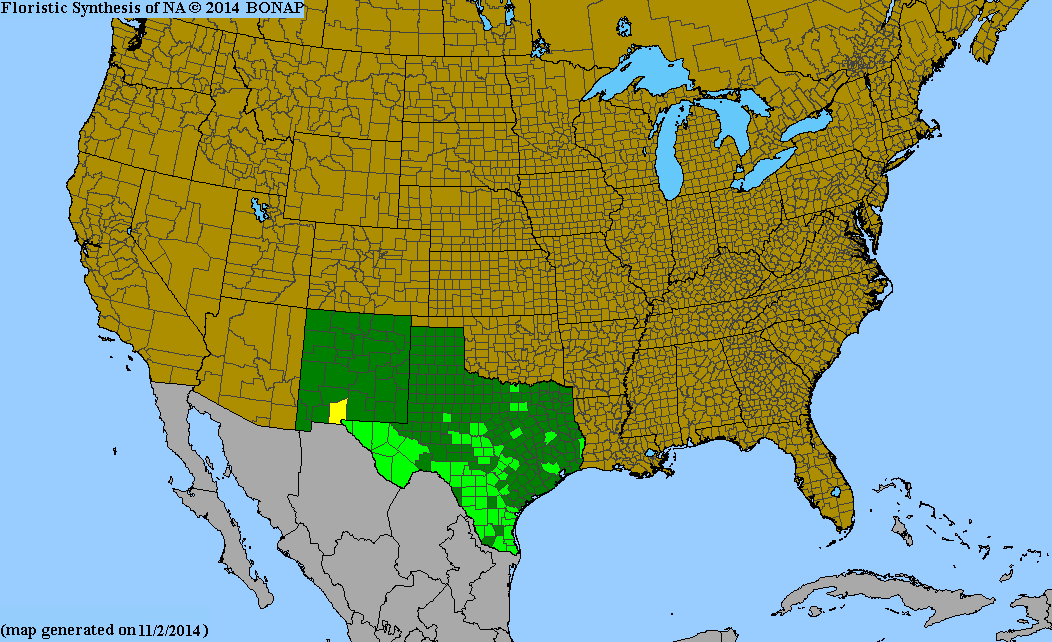 Map Color Key Map Color Key |
Texas Status: Native |
Banner photo of Castilleja indivisa and Lupinus ssp. taken along FM 1323 north of Johnson City, Blanco County
© Tom Lebsack 2025
Every attempt is made to provide accurate, up-to-date, and relevant information, but the completeness or accuracy of any information presented on this website cannot be guaranteed. I use authoritative references to insure high standards of accuracy and review and update the information frequently.

